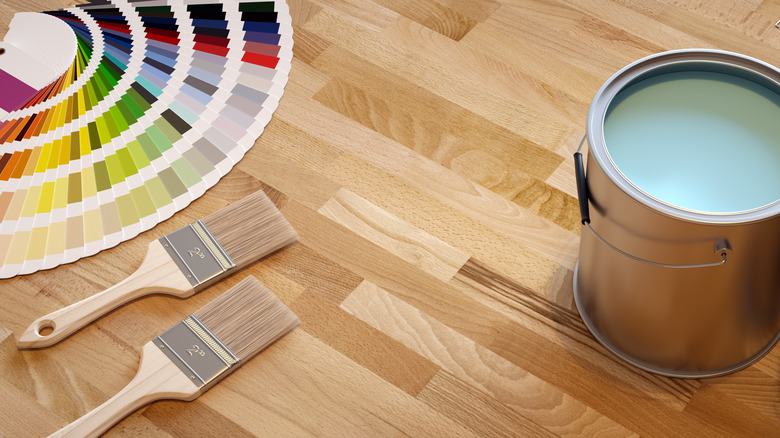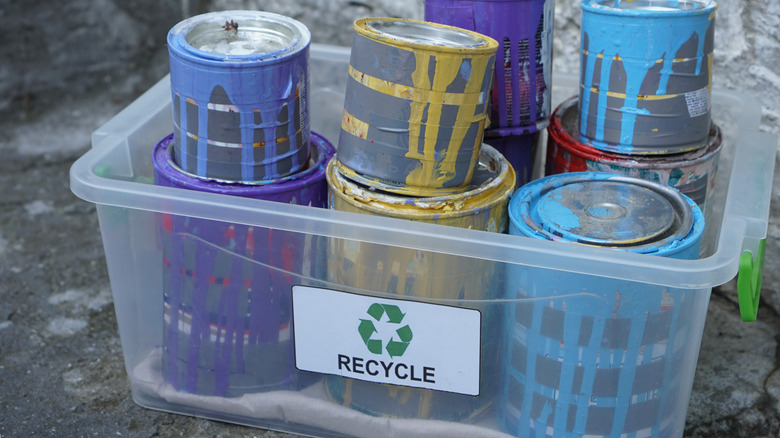The One Important Paint Fact You Need To Know Before Buying A Fixer Upper
Paint is one of the easiest and most cost-effective ways to revamp or refresh a space. If you think paint's transformative powers only apply to the walls, you need to consider your space a little more broadly. As Meredith Lynn Designs explains, a few coats of paint can give an entirely new look to everything from countertops to bathroom vanities to backsplashes, and even elements like brick or stone.
If you're the DIY type who wants to buy a fixer upper and use the power of paint to breathe new life into it, there's one important paint fact you need to know, and it has to do with how you're disposing of it. After all, if you're painting multiple walls as well as other elements within your new home, you're going to have a fair bit of leftover paint, as well as empty cans and buckets, at the end of the job.
It's important to educate yourself on the proper disposal methods for paint, especially the fact that, as Realtor reports, you should never pour paint down the drain or throw it directly into the trash. This goes for empty paint cans too. To make things even more complicated, there are slightly different things you should do according to the type of paint you used. Simply put, if you want to paint your home like a professional, you need to be knowledgeable about safe and appropriate disposal methods.
The proper way to dispose of paint
Before you can determine how to dispose of the paint you have, you need to know exactly what type you've got. As Realtor outlines, the two most frequently used paints are latex varieties and oil-based varieties. Chances are, if you were using the paint for a home project, it'll be a latex variety. This is, by far, the most common for interior and exterior painting; Rethority reports that approximately 75% of all paint sold is this variety. Luckily, it's also the easier of the two to deal with in terms of disposal.
For disposing of latex-based paint, all you need to do is place the paint cans and trays either outside or in a well-ventilated area until the paint is able to dry out and harden. Cat litter will help this process go faster, otherwise it could take a few weeks. Once it's dry, you can essentially peel away the hardened paint and dispose of it in the trash. When that's done, go ahead and recycle the cans it came in.
Oil-based paints are considered hazardous waste and require more effort, for safety reasons. They can release fumes, so even in a well-ventilated area, you don't want to leave them out to dry for extended periods of time. Instead, you'll want to find a household hazardous waste center or paint drop-off site in your area. They have the tools and knowledge to safely dispose of oil-based paint.

